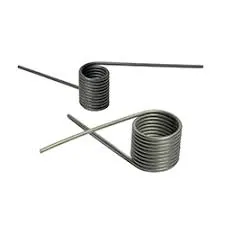
- Mobile Phone
- +8613931874955
- sales@cntcmetal.com
metal wire grid
Exploring the Fascinating World of Metal Wire Grids
In the realm of engineering and design, metal wire grids have emerged as a versatile and essential component across various industries. These grids, made from an assortment of metals such as steel, aluminum, and copper, serve numerous purposes, from structural support to aesthetic applications. This article delves into the properties, applications, and advantages of metal wire grids, illustrating their significance in contemporary technology and architecture.
Properties of Metal Wire Grids
Metal wire grids are primarily characterized by their strength, durability, and flexibility. The choice of metal plays a critical role in determining the grid's properties. For instance, steel wire grids offer exceptional tensile strength, making them ideal for load-bearing applications. On the other hand, aluminum grids are lighter and resistant to corrosion, which is advantageous in outdoor settings. Copper grids are often used in electrical applications due to their excellent conductivity.
The manufacturing process of wire grids involves weaving or welding metal wires together to form a network of connected strands. This method allows for a range of mesh sizes, from very fine to coarse, depending on the intended use. The open structure of wire grids allows for airflow and visibility, making them suitable for fencing, mesh screens, and architectural facades.
Applications in Various Industries
Metal wire grids find applications in diverse sectors, including construction, automotive, aerospace, and telecommunications. In construction, they are employed in reinforced concrete applications, where grids provide tensile strength and help distribute loads evenly, enhancing the overall stability of structures. They are also commonly used in scaffolding systems, allowing for temporary support during building renovations.
In the automotive industry, metal wire grids are utilized in the manufacturing of filters and screens that prevent contaminants from entering engines and other sensitive components. Their lightweight and durable nature makes them an ideal choice for enhancing vehicle performance.
The aerospace sector also capitalizes on metal wire grids for various components, including lightweight structural elements and thermal shields. These grids help reduce weight without compromising strength, which is crucial in flight applications where every gram counts.
metal wire grid

Advantages of Metal Wire Grids
One of the primary advantages of metal wire grids is their adaptability. They can be customized in terms of size, mesh density, and metal type to suit specific needs. This flexibility allows engineers and designers to create solutions tailored to diverse applications, enhancing efficiency and functionality.
Furthermore, metal wire grids boast excellent durability, withstanding harsh environmental conditions and heavy loads. Their resistance to corrosion, particularly in galvanized and stainless steel variants, makes them suitable for use in outdoor applications and environments prone to moisture and chemicals.
Another noteworthy benefit is their cost-effectiveness. The manufacturing processes for metal wire grids are generally straightforward, leading to lower production costs compared to other materials. Additionally, their longevity reduces the need for frequent replacements, ultimately saving money in maintenance and repairs.
Aesthetic Appeal
Beyond their functional properties, metal wire grids can also serve decorative purposes in architecture and design. Architects often utilize wire grids to create striking facades or as lightweight cladding materials, contributing to a modern aesthetic. The transparency of wire grids allows natural light to filter through, enhancing the visual dynamics of a space while maintaining an open feel.
Conclusion
In conclusion, metal wire grids are an integral part of modern engineering and design, providing a unique blend of strength, durability, and aesthetic appeal. Their versatility allows them to be applied across numerous industries, from construction to aerospace, while their customizable features make them an attractive choice for various applications. As technology advances and new materials emerge, metal wire grids will undoubtedly continue to play a vital role in shaping the future of structural design and engineering solutions. Whether serving a functional or decorative purpose, these grids exemplify the fusion of utility and design in today's world.
share:
-
Why Sacrificial Formwork Is Redefining Underground ConstructionNewsJun.06,2025
-
The Structural Dynamics of Modern Concrete: How Snake Spacers Revolutionize Flexible ReinforcementNewsJun.06,2025
-
Snake Spacers Smart-Lock Concrete Reinforcement with Surgical PrecisionNewsJun.06,2025
-
Snake Spacers: Reinforcement Precision for Modern Concrete ProjectsNewsJun.06,2025
-
Snake Spacers Powering Concrete's Structural DNANewsJun.06,2025
-
Slither into Success: Snake Spacers' Precision Bite for Unbreakable ReinforcementNewsJun.06,2025
-
Sacrificial Formwork: Building Stronger, Faster, and Safer StructuresNewsJun.06,2025



















